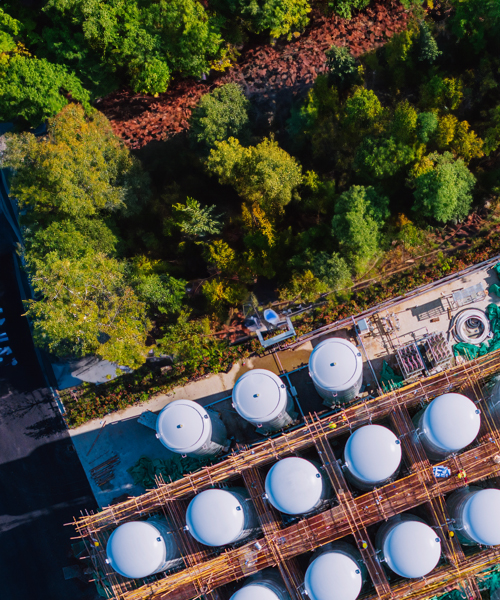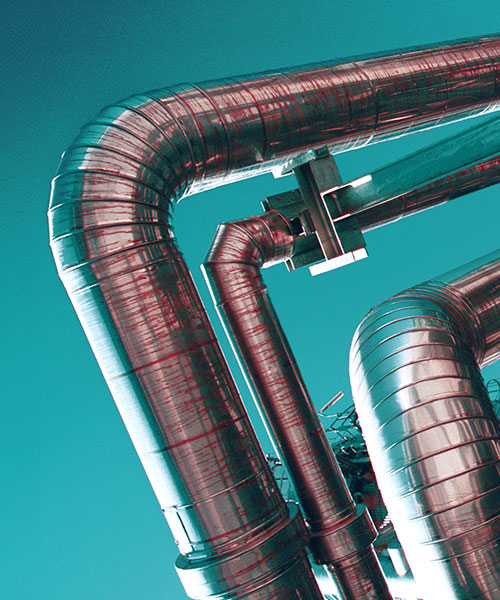February 06, 2025 • 6 min read
From concept to operations: Delivering industrial scale green hydrogen projects
Green hydrogen is becoming a vital solution in the global energy transition, providing a decarbonized option for even hard to abate sectors. As the industry evolves, we explore challenges to overcome for a comprehensive project delivery.
Mapping the possibilities of green hydrogen
Green hydrogen’s development has been driven partly by global efforts to decarbonize heavy industries such as steel production, refining and chemicals to reduce carbon footprints and reach net zero targets.
However, not all geographies with high demand for green hydrogen are most effective for production powered by renewables. Where some countries in Europe and Asia have significant demand, they may not have the right conditions for renewables to power electrolyzers.On the other hand, more remote countries and regions such as Chile, Namibia, North Africa and the Middle East may have optimal conditions such as abundant sunshine and wind, but a much lower need for hydrogen.
This geographical disconnect highlights a need to scale production in these areas and develop export and import infrastructure to meet industrial demands in the larger markets.
Spurring hydrogen development through policy
While green hydrogen has great potential, costs, when compared with fossil fuels, continue to pose a challenge.
“The levelized cost of hydrogen (LCOH) is currently too high to compete with traditional grey hydrogen,” says Kay Radtke, Vice President of Renewable Hydrogen Europe.
While governments and industry players are very aware of this price gap, GlobalData’s hydrogen database shows insufficient government support compared to other sectors where projects often receive higher funding percentages. Out of its total bank of hydrogen projects, just 0.75 percent, or 15, received full government funding and only 18.55 percent, or 371, received partial government funding.
Several policy initiatives have been implemented to address this issue including the Important Projects of Common European Interest (IPCEI) in the EU, designed to incentivise production by lowering capital expenditure (CAPEX). Similarly, the US’ Inflation Reduction Act (IRA) and the UK’s Hydrogen Allocation Rounds (HARs) are working to support green hydrogen projects.
Despite these efforts, the price gap between production costs and what offtakers are willing to pay remains, calling for additional mechanisms like the European Hydrogen Bank’s approach towards contracts for difference (CFD). These CFDs aim to match the difference between the highest market price and the lowest production cost increasing financial viability for both producers and consumers.
Germany’s H2 Global initiative follows a similar approach. Initially limited to Germany, it’s now expanding internationally, supporting offtake and supply mechanisms. However, as Radtke points out, a comprehensive market mechanism is needed. “You need mechanisms on the offtake side and the supply side to make it work.”
Strong incentives and long-term policy support are crucial to allow green hydrogen to transition from niche projects to viable, competitive mainstream operations.
Standardizing solutions for viable developments
The current custom nature of green hydrogen production creates another challenge by driving up costs. We’ve found standardizing hydrogen plant design and delivery is key to significantly reduce capital expenditure, optimize LCOH and streamline project development.
“This package uses standardized unit blocks, capacities and an integrated supply chain solution to deliver the lowest optimized cost,” explains Radtke.
Our goal is to minimize the bespoke nature of green hydrogen projects and achieve a modular, standardized system that can be deployed quickly and at lower cost. This approach, also known as a minimum viable product, focuses on delivering functional, cost-effective hydrogen production plants that meet industry specifications without unnecessary customizations.
Making green hydrogen feasible
“Understanding our customer’s business drivers, project purpose and goals [is] important,” says Radtke.“While elements of the end design may be standardized, the feasibility work needs to incorporate each project’s unique risks.”
We start each project with a deep understanding of our partner’s drivers and outcomes before conducting a detailed analysis of the renewable energy source – wind, solar or another option. This lets us determine how to integrate energy production with hydrogen generation, factoring intermittency, storage options and grid stability into project feasibility.
“Selecting the optimal technology for green hydrogen production is another critical step in moving from concept to operations,” continues Radtke. “The choice of technology, from proton exchange membrane (PEM), alkaline or solid oxide electrolysis cells (SOEC) is heavily influenced by the project specifics.”
For example, PEM electrolyzers have a smaller footprint, which may be valuable in environments with limited space. However, other factors including the maturity of the technology and the pressure requirements of the hydrogen offtake, must also be considered. There may also be differences in the components of the electrolyzer that have impacts on the overall CAPEX and so play a role in a solution’s cost evaluation.
When selecting technologies, we need to consider performance and non-technical factors like manufacturing capacities, local content requirements and production site locations. The availability of key materials such as rare metals used in PEM technology also plays a role, particularly when customers have specific environmental, social and governance (ESG) requirements.
Overcoming major challenges in green hydrogen production
While certain technologies such as SOEC show promise for integrating with ammonia production facilities, they’re not yet at the scale required for gigawatt level applications. Until these technologies mature, project developers will need to balance the advantages of cutting-edge technologies with their readiness for large scale deployment.
Our role is critical in optimizing projects. We make sure all stakeholders, from technology providers and key equipment suppliers to fabricators and construction teams, are aligned and working towards cost effective solutions. This is vital to making green hydrogen a viable option for the future.
We have developed a standardized package plant solution, which aims to significantly reduce the capital cost of the asset.
The path forward for green hydrogen
With continued innovation, standardization and collaboration industry wide, green hydrogens potential contribution to the energy transition is becoming clearer.
We’re playing a pivotal role in addressing the technical, economic and operational challenges that come with large scale deployment. We’re using standardized systems across renewable energy integration, hydrogen production, storage and downstream derivatives. This lets us tailor solutions to meet project requirements, while helping partners lower costs and accelerating the adoption of green hydrogen.







